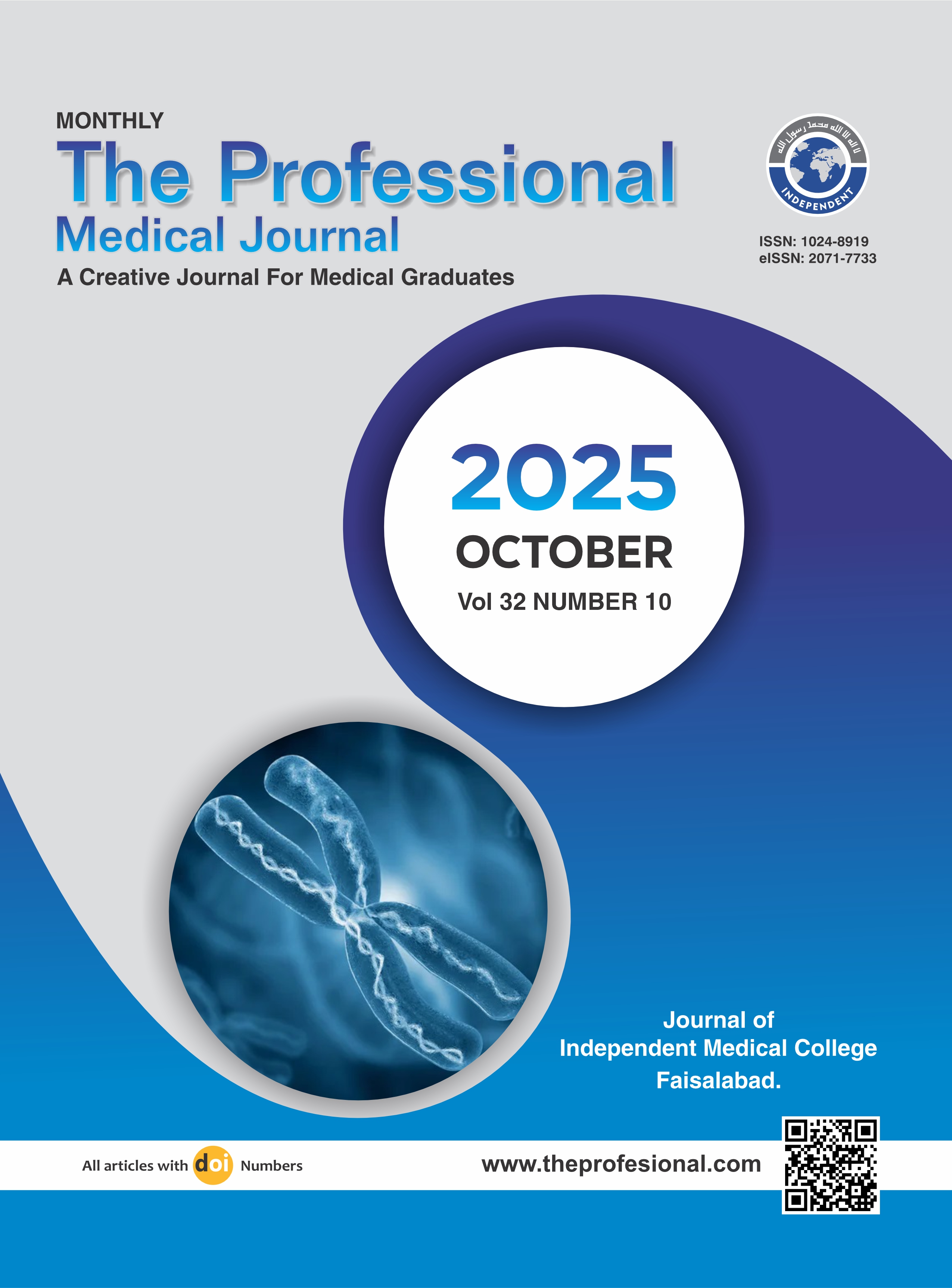Role of Nasal CPAP in reducing the need of mechanical ventilation in premature newborns with gestational age less than 37 weeks in resource limited setting.
DOI:
https://doi.org/10.29309/TPMJ/2025.32.10.9856Keywords:
Continuous Positive Airway Pressure, Premature Infants, SuccessAbstract
Objective: To ascertain the incidence of favorable outcomes resulting from the utilization of CPAP in preterm neonates. Study Design: Descriptive, Cross-sectional study. Setting: Department of Pediatrics, Madinah Teaching Hospital, Faisalabad. Period: 30th June 2023 to 29th December 2023. Methods: Our study included 316 preterm neonates of both genders who were treated with CPAP and had a gestational age of fewer than 37 weeks. Patients diagnosed with neuromuscular illness, congenital malformations, grade III hypoxic-ischemic encephalopathy (HIE), syndromic newborns, and congenital heart disease were not included. The factors reported on the performa included gestational age, birth weight, time of initiating CPAP after birth, administration of surfactant, and duration of CPAP treatment. The outcome was assessed based on two criteria: successful outcome, defined as the patient achieving complete recovery after CPAP treatment without needing mechanical ventilation, and treatment failure, defined as the patient requiring mechanical breathing after CPAP treatment. Results: The average gestational age was 30.08 ± 2.75 weeks. Among the 316 patients, 161 (50.95%) were male and 155 (49.05%) were female, resulting in a male to female ratio of 1.1:1. The average birth weight was 2.50 ± 0.73 kg. The mean Apgar score was 5.46 with a standard deviation of 1.45. The average time for initiating CPAP after birth was 17.46 ± 9.04 hours. The study revealed that 233 out of 315 preterm neonates (73.73%) experienced successful outcomes with the use of CPAP. Conclusion: This study determined that the rate of favorable outcomes in the use of Continuous Positive Airway Pressure (CPAP) for preterm newborns is exceptionally high.
Downloads
Published
Issue
Section
License
Copyright (c) 2025 The Professional Medical Journal

This work is licensed under a Creative Commons Attribution-NonCommercial 4.0 International License.


